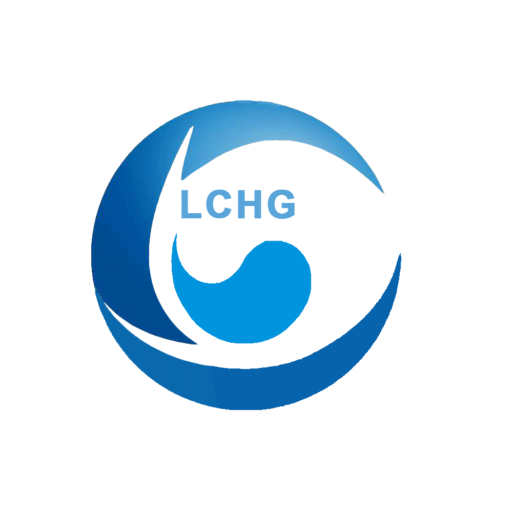溶剂型油墨是否即将消失?这似乎是印刷业非常关心的一个话题。近年来,随着环保意识的逐渐增强,许多公司开始寻求更加环保和可持续发展的印刷解决方案。在此背景下,溶剂型油墨能否继续在市场上站稳脚跟,成为人们关注的焦点。那么,让我们来了解一下溶剂型油墨。
溶剂型油墨一般是指使用各种溶剂作为稀释剂的油墨,包括醇类、酯类、苯类和酮类溶剂。由于苯类和酮类溶剂的毒性较大,在凹版烟标印刷中已禁止使用这两种溶剂型油墨。在国外,凹版印刷大多使用水性油墨,以减少溶剂残留。在我国,由于水性油墨在实际应用中存在色域和干燥问题,目前仍主要使用溶剂型油墨。[1
作为印刷业的重要组成部分,其性能直接关系到印刷品的质量和效果。
1
溶剂型油墨的性能
1.良好的可印刷性
溶剂型油墨的粘度和干燥速度适中,可以满足各种印刷设备的需要,确保印刷品的清晰度和色彩鲜艳度。
2.广泛的适用性
溶剂型油墨适用于多种承印物,如纸张、塑料、金属等,可满足不同领域的印刷需求。
3.印刷效率高
溶剂型油墨可以在印刷过程中快速干燥,从而提高印刷效率,降低生产成本。
然而,根据实验,在使用溶剂型油墨的凹版连续印刷过程中,非甲烷总烃(NMHC)的最大平均值达到 5975.67 mg/m3,约为使用水基油墨的柔版印刷(191.67 mg/m3)的 31.2 倍[2]。它们 通常 挥发性有机化合物 空气中,造成空气污染,对人体健康造成潜在危害。
2
溶剂型油墨的分类
根据不同的分类标准,溶剂型油墨可分为几类。
1.根据溶剂的 化学性质我们可以将它们分为几类,包括酮、醚、酯、醇(一元醇 - 脂肪醇、脂环醇和乙醇)和烃(脂肪烃、芳香烃和环烷烃)。在这些类别中,我们还可以进一步区分极性溶剂、非极性溶剂、活性溶剂、惰性溶剂和剥离剂(漂洗剂)。
- 极性溶剂:这类溶剂具有较高的介电常数。例如醇和酮,它们的分子中含有羟基和羰基,因此具有极性。
- 非极性溶剂:这类溶剂的介电常数低于极性溶剂。例如各种碳氢化合物,它们通常都是非极性的。
- 反应溶剂:这些溶剂能够溶解或分散硝化纤维,因此具有特定的化学活性。
- 惰性溶剂:这些溶剂不能溶解硝化纤维,但能与活性溶剂产生协同效应,从而在特定情况下发挥其作用。
2.按溶剂类型
- 水基溶剂型油墨:以水为主要溶剂,具有环保、易清洗等优点。广泛应用于食品包装、儿童用品等领域。
- 油基溶剂型油墨:以有机溶剂为主,具有干燥快、色彩鲜艳的特点。它们通常用于印刷高端产品。
3.干燥法
- 自干油墨:室温下自然干燥,适用于简单的印刷产品;
- 烘烤油墨:需要高温烘烤才能干燥固化,适用于汽车、电器等要求较高的产品印刷。
4.通过使用
- 印刷油墨:主要用于在纸张、塑料和金属等各种材料上印刷;
- 涂层油墨:主要用于各种表面的涂层和装饰;
- 喷墨墨水:广泛应用于广告、装饰等领域。
3
溶剂型油墨的开发
近年来,随着环保要求的不断提高,对油墨的要求也更加严格,主要涉及无甲苯、低 VOCs 排放、低迁移、安全卫生等方面。在此背景下,甲苯基溶剂和酮基溶剂的使用逐渐减少,重点转向更加环保的酯类溶剂和醇类溶剂,以减轻对环境的负担。
一方面,为了减少印刷过程中的污染排放,环保溶剂型油墨的开发已成为行业主流。另一方面,环保油墨如水性油墨和无机油墨的兴起,也为印刷业带来了新的发展机遇。 紫外线油墨 对溶剂型油墨市场产生了重大影响。
在这种情况下,溶剂型油墨行业必须在保持高质量印刷效果的同时,积极推动技术创新和环保升级,以满足市场需求和环保标准。
至于溶剂型油墨是否会被淘汰,这并不是一个绝对的问题。尽管环保型印刷解决方案正逐渐占据市场份额,但溶剂型油墨仍具有独特的优势,如出色的印刷效果和广泛的应用范围。因此,溶剂型油墨很可能在未来一段时间内继续存在于市场中。
展望未来,油墨行业将继续朝着醇溶性油墨、水溶性油墨和水性油墨的方向发展,以更好地适应当前和未来的市场趋势,推动更加环保的包装印刷油墨的应用。
汽车行业最理想的油墨是什么?
那里 市场对无铅玻璃的需求迅速增长 油墨。与此同时,汽车工业的快速发展带动了汽车钢化玻璃需求的强劲增长,这也推动了汽车钢化玻璃油墨的发展,同时也对油墨的性能提出了更高的要求[1]。
由于含铅量很低或不使用油墨颜料,大大降低了污染危害,因此常被称为环保型玻璃油墨。
1
无铅玻璃油墨在汽车工业中的应用
汽车玻璃油墨由低熔点玻璃、无机黑色素和有机碳粉组成,通常印在汽车玻璃的边缘,俗称 "黑框"[2-3]。它们不仅具有装饰功能,还能增强玻璃与车身之间的结合牢固度,降低紫外线的透过率等。[4].
由于无铅玻璃油墨可以满足汽车行业对环保、安全和高质量印刷的需求,近年来,无铅玻璃油墨在汽车玻璃领域的应用受到越来越多的关注和青睐。常见的应用如下:
- 后挡风玻璃 无铅玻璃油墨通常用于在汽车后挡风玻璃上进行印刷,以形成具有良好光泽度、耐酸性和抗阻塞性能的油墨涂层。这种油墨涂层既能满足汽车后挡风玻璃的生产工艺要求,又能保证驾驶视野的清晰度。
- 太阳能控制玻璃 在一些高端车型上,太阳能控制玻璃也开始采用无铅玻璃油墨印刷。这种玻璃可以有效控制车内温度,提高驾驶舒适度,同时无铅玻璃油墨的应用也符合环保要求。
- 侧窗 无铅玻璃油墨也可用于侧窗印刷。使用无铅玻璃油墨可确保侧窗上的印刷图案清晰耐用,不会对环境或人体健康造成危害。
2
制备用于汽车玻璃油墨的无铅玻璃油墨
① SiO2-Bi2O3-ZnO 无铅玻璃墨水的制备[5
玻璃的成分在很大程度上决定了其结构和性能。试验表明,使用 SiO2-Bi2O3-ZnO 无铅玻璃粉作为玻璃油墨,其软化温度为 575 ℃,结晶温度为 600 ℃,具有良好的玻璃成型性能。当玻璃粉含量为 60% 时,在 680 ℃ 和 1.5 分钟保温时间条件下制备的汽车后窗玻璃油墨涂层可满足汽车后窗玻璃生产线的工艺要求。成型的玻璃膜具有优异的光泽、耐酸性和抗粘连性。
用无铅低熔点玻璃制备的汽车玻璃墨水 [6
以 R2O-Bi2O3-B2O3-SiO2 玻璃为研究对象,对上釉过程进行了实验研究。使用 X 射线衍射仪、红外吸收光谱仪、扫描电子显微镜和热膨胀分析仪研究了 Bi2O3/B2O3、Bi2O3/SiO2 和 R2O(Li2O、Na2O、K2O)成分对玻璃结构和热性能的影响。将低熔点玻璃应用于汽车玻璃油墨,成功获得了具有良好附着力、黑度、不透明度和光泽度的汽车玻璃油墨。
立即联系我们!
如果您需要价格,请在下表中填写您的联系信息,我们通常会在 24 小时内与您联系。您也可以给我发电子邮件 info@longchangchemical.com 请在工作时间(UTC+8 周一至周六,上午 8:30 至下午 6:00)或使用网站即时聊天工具获得及时回复。
| 聚硫醇/聚硫醇 | ||
| DMES 单体 | 双(2-巯基乙基)硫醚 | 3570-55-6 |
| DMPT 单体 | THIOCURE DMPT | 131538-00-6 |
| PETMP 单体 | 季戊四醇四(3-巯基丙酸酯) | 7575-23-7 |
| PM839 单体 | 聚氧(甲基-1,2-乙二基) | 72244-98-5 |
| 单官能团单体 | ||
| HEMA 单体 | 甲基丙烯酸 2-羟乙基酯 | 868-77-9 |
| HPMA 单体 | 甲基丙烯酸羟丙酯 | 27813-02-1 |
| THFA 单体 | 丙烯酸四氢糠酯 | 2399-48-6 |
| HDCPA 单体 | 氢化双环戊烯丙烯酸酯 | 79637-74-4 |
| DCPMA 单体 | 甲基丙烯酸二氢双环戊二烯酯 | 30798-39-1 |
| DCPA 单体 | 丙烯酸二氢双环戊二烯酯 | 12542-30-2 |
| 二氯丙烯酰亚胺单体 | 甲基丙烯酸二环戊氧基乙酯 | 68586-19-6 |
| DCPEOA 单体 | 丙烯酸二环戊烯基氧基乙基酯 | 65983-31-5 |
| NP-4EA 单体 | (4) 乙氧基化壬基酚 | 50974-47-5 |
| LA 单体 | 丙烯酸十二烷基酯/丙烯酸十二烷基酯 | 2156-97-0 |
| THFMA 单体 | 甲基丙烯酸四氢糠酯 | 2455-24-5 |
| PHEA 单体 | 2-苯氧基乙基丙烯酸酯 | 48145-04-6 |
| LMA 单体 | 甲基丙烯酸月桂酯 | 142-90-5 |
| IDA 单体 | 丙烯酸异癸酯 | 1330-61-6 |
| IBOMA 单体 | 甲基丙烯酸异冰片酯 | 7534-94-3 |
| IBOA 单体 | 丙烯酸异冰片酯 | 5888-33-5 |
| EOEOEA 单体 | 2-(2-乙氧基乙氧基)丙烯酸乙酯 | 7328-17-8 |
| 多功能单体 | ||
| DPHA 单体 | 双季戊四醇六丙烯酸酯 | 29570-58-9 |
| DI-TMPTA 单体 | 二(三羟甲基丙烷)四丙烯酸酯 | 94108-97-1 |
| 丙烯酰胺单体 | ||
| ACMO 单体 | 4-丙烯酰基吗啉 | 5117-12-4 |
| 双功能单体 | ||
| PEGDMA 单体 | 聚乙二醇二甲基丙烯酸酯 | 25852-47-5 |
| TPGDA 单体 | 三丙二醇二丙烯酸酯 | 42978-66-5 |
| TEGDMA 单体 | 三乙二醇二甲基丙烯酸酯 | 109-16-0 |
| PO2-NPGDA 单体 | 丙氧基新戊二醇二丙烯酸酯 | 84170-74-1 |
| PEGDA 单体 | 聚乙二醇二丙烯酸酯 | 26570-48-9 |
| PDDA 单体 | 邻苯二甲酸二乙二醇二丙烯酸酯 | |
| NPGDA 单体 | 新戊二醇二丙烯酸酯 | 2223-82-7 |
| HDDA 单体 | 二丙烯酸六亚甲基酯 | 13048-33-4 |
| EO4-BPADA 单体 | 乙氧基化 (4) 双酚 A 二丙烯酸酯 | 64401-02-1 |
| EO10-BPADA 单体 | 乙氧基化 (10) 双酚 A 二丙烯酸酯 | 64401-02-1 |
| EGDMA 单体 | 乙二醇二甲基丙烯酸酯 | 97-90-5 |
| DPGDA 单体 | 二丙二醇二烯酸酯 | 57472-68-1 |
| 双-GMA 单体 | 双酚 A 甲基丙烯酸缩水甘油酯 | 1565-94-2 |
| 三官能单体 | ||
| TMPTMA 单体 | 三羟甲基丙烷三甲基丙烯酸酯 | 3290-92-4 |
| TMPTA 单体 | 三羟甲基丙烷三丙烯酸酯 | 15625-89-5 |
| PETA 单体 | 季戊四醇三丙烯酸酯 | 3524-68-3 |
| GPTA ( G3POTA ) 单体 | 丙氧基三丙烯酸甘油酯 | 52408-84-1 |
| EO3-TMPTA 单体 | 三羟甲基丙烷三丙烯酸乙氧基化物 | 28961-43-5 |
| 光阻单体 | ||
| IPAMA 单体 | 2-异丙基-2-金刚烷基甲基丙烯酸酯 | 297156-50-4 |
| ECPMA 单体 | 1-乙基环戊基甲基丙烯酸酯 | 266308-58-1 |
| ADAMA 单体 | 1-金刚烷基甲基丙烯酸酯 | 16887-36-8 |
| 甲基丙烯酸酯单体 | ||
| TBAEMA 单体 | 2-(叔丁基氨基)乙基甲基丙烯酸酯 | 3775-90-4 |
| NBMA 单体 | 甲基丙烯酸正丁酯 | 97-88-1 |
| MEMA 单体 | 甲基丙烯酸 2-甲氧基乙酯 | 6976-93-8 |
| i-BMA 单体 | 甲基丙烯酸异丁酯 | 97-86-9 |
| EHMA 单体 | 甲基丙烯酸 2-乙基己酯 | 688-84-6 |
| EGDMP 单体 | 乙二醇双(3-巯基丙酸酯) | 22504-50-3 |
| EEMA 单体 | 2-甲基丙-2-烯酸 2-乙氧基乙酯 | 2370-63-0 |
| DMAEMA 单体 | 甲基丙烯酸 N,M-二甲基氨基乙酯 | 2867-47-2 |
| DEAM 单体 | 甲基丙烯酸二乙氨基乙酯 | 105-16-8 |
| CHMA 单体 | 甲基丙烯酸环己基酯 | 101-43-9 |
| BZMA 单体 | 甲基丙烯酸苄酯 | 2495-37-6 |
| BDDMP 单体 | 1,4-丁二醇二(3-巯基丙酸酯) | 92140-97-1 |
| BDDMA 单体 | 1,4-丁二醇二甲基丙烯酸酯 | 2082-81-7 |
| AMA 单体 | 甲基丙烯酸烯丙酯 | 96-05-9 |
| AAEM 单体 | 甲基丙烯酸乙酰乙酰氧基乙基酯 | 21282-97-3 |
| 丙烯酸酯单体 | ||
| IBA 单体 | 丙烯酸异丁酯 | 106-63-8 |
| EMA 单体 | 甲基丙烯酸乙酯 | 97-63-2 |
| DMAEA 单体 | 丙烯酸二甲胺基乙酯 | 2439-35-2 |
| DEAEA 单体 | 2-(二乙基氨基)乙基丙-2-烯酸酯 | 2426-54-2 |
| CHA 单体 | 丙-2-烯酸环己基酯 | 3066-71-5 |
| BZA 单体 | 丙-2-烯酸苄酯 | 2495-35-4 |
